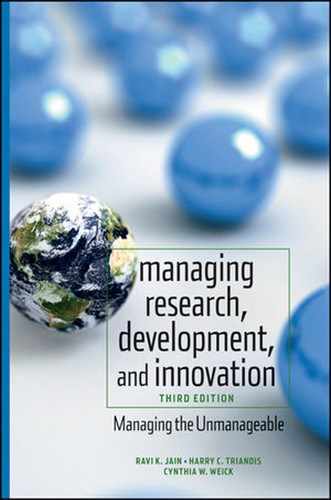Prastacos, G., et al. (2002). An Integrated Framework for Managing Change in the New Competitive Landscape. European Management Journal, 20(1), 55–71 (February).
Press, F. (1988). The Dilemma of the Golden Age. Address to the Members of the National Academy of Science. (April 26, 1988).
Pritchard, R. D., and Youngcourt, S. S. (2008) Culture, feedback, and motivation. In D. L. Stone, and E. F. Stone-Romero (Eds.) The influence of culture on human resources management processes and practices, 157–180. New York: Psychology Press.
Pronin, E. D., Y. Lin, and L. Ross (2002). The bias blind spot: Perspectives of bias in self versus others. Personality and Social Psychology Bulleting, 28, 361–381.
Quinn, J. B. (1980). Strategies for change. In H. Mintzberg and J. B. Quinn (Eds.), Readings in the Strategy Process, 3rd Edition 3–10. Englewood Cliffs, NJ: Prentice Hall (1998).
Quinn, J. B. (1985). Managing innovation: Controlled chaos. Harvard Business Review, 63(3), 73–84 (May-June).
Quinn, J. B., and F. G. Hilmer (1994). Strategic Outsourcing. Sloan Management Review, 35(4), 43–55.
Rahim, A. (1983). A measure of styles of handling interpersonal conflict. Academy of Management Journal, 26, 368–376.
Rangaswamy, A., and G. L. Lilien. (1997). Software tools for new product development. Journal of Marketing Research, 177–184 (February).
Regis, E. (1987). Who Got Einstein's Office? New York: Addison-Wesley.
Rheem, H. (1995). Improving productivity: The importance of R&D. Harvard Business Review, 73(3), 12–13 (May–June).
Rice, M. P. (2008). Implementing a Learning Plan to Counter Project Uncertainty. MIT Sloan Management Review, 54–62 (Winter).
Ritti, R. (1982). Work goals of scientists and engineers, in M. L. Tushman and W. L. Moore (Eds.), Readings in the Management of Innovations, 363–375. Boston: Pitman.
Roberts, E. B. (1978). What do we really know about managing R&D? Interview with Michael Wolff. Research Management, 21(6), 6–11 (November).
Roberts, E. B. (1995). Benchmarking the strategic management of technology-I. Research Technology Management, 38(1), 44–56 (January-February).
Roberts, E. B., and A. L. Frohman (1978). Strategies for improving research utilization. Technology Review, 80(5), 32–39 (March–April).
Roberts, E. B., and A. R. Fusfeld (1981). Staffing the innovative technology-based organization. Sloan Management Review, 22(3), 19–34 (Spring).
Rogers, E. M. (1983). Diffusion of Innovations, 3rd ed. New York: Free Press.
Rogers, E. M. (1995). Diffusion of Innovations. 4th edition, 132. Free Press: New York.
Rokeach, M. (1964). The three Christs of Ypsilanti, a psychological study. New York: Knopf.
Rosenbaum, M. E., D. L. Moore, J. L. Cotton, M. S. Cook, R. A. Hieser, M. N. Shovar, and M. J. Gray (1980). Group productivity and process: Pure and mixed reward structures and task interdependence. Journal of Personality and Social Psychology, 39, 626–642.
Rosenthal, R., and L. Jacobson (1992). Pygmalion in the classroom: Teacher expectations and pupils' intellectual development. New York: Irvington Publishers.
Rosovsky, H. (1987). Deaning. Harvard Magazine (January–February).
